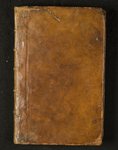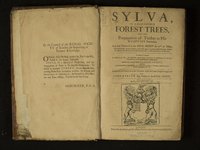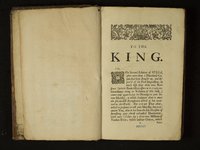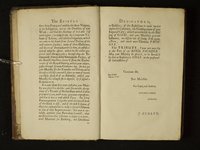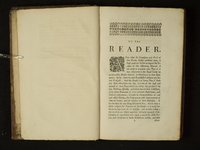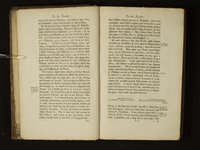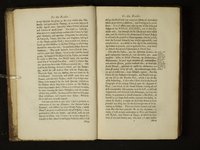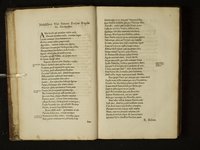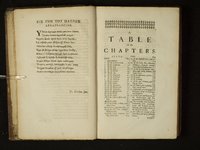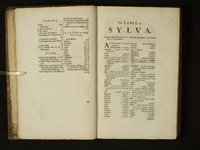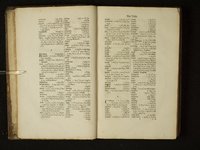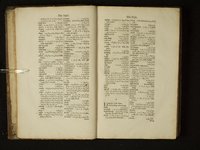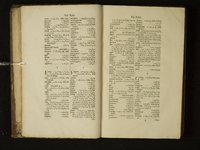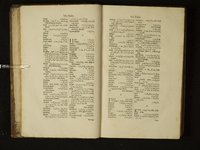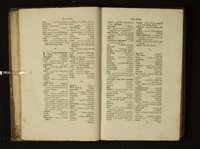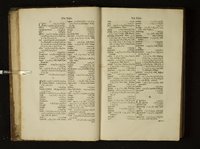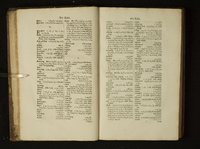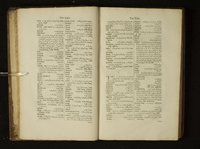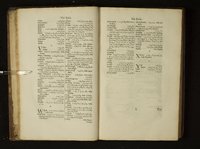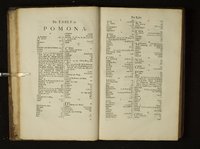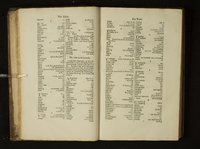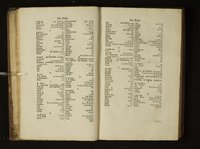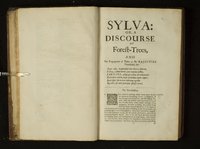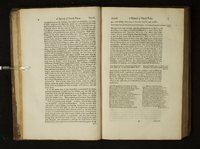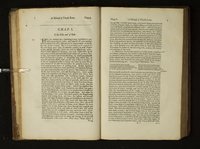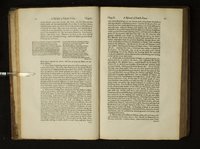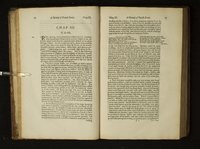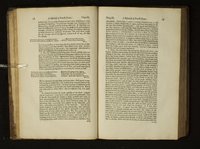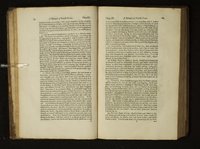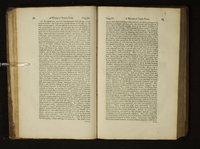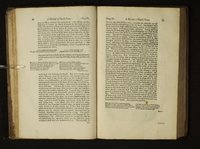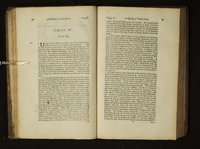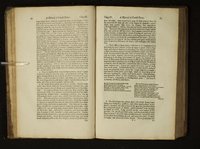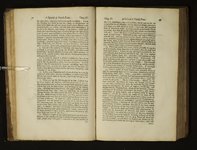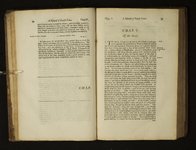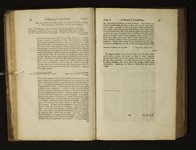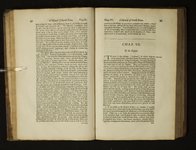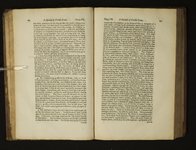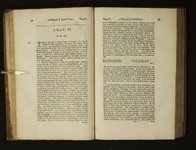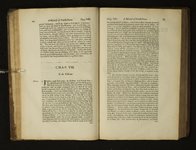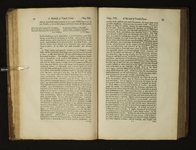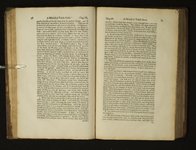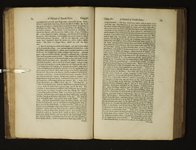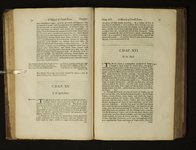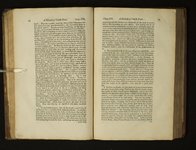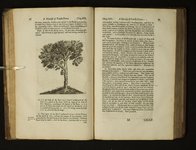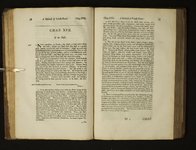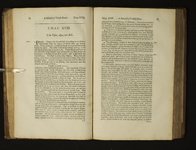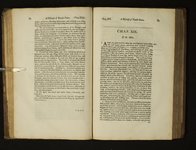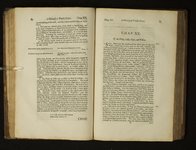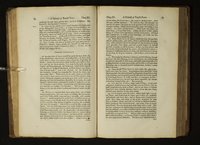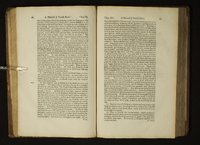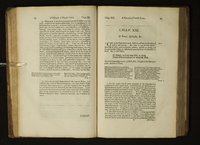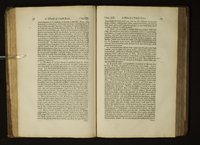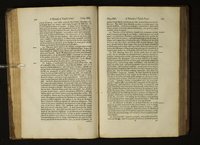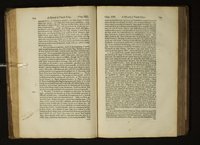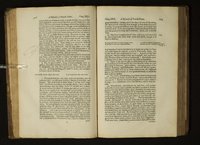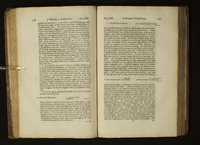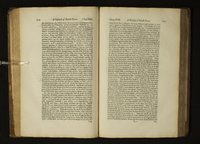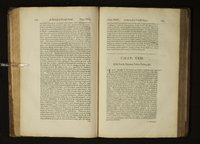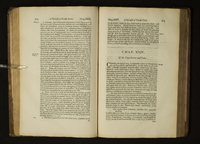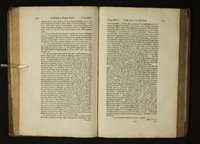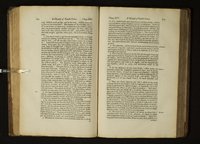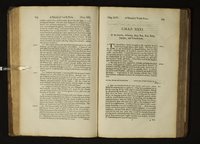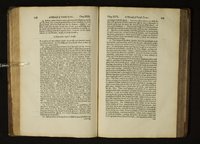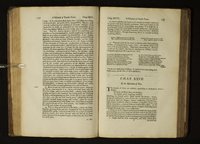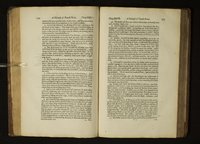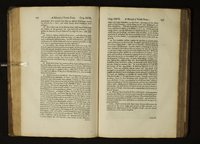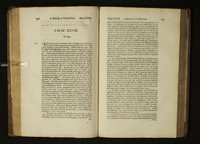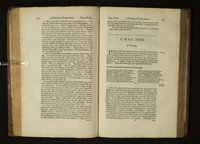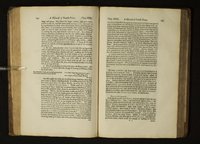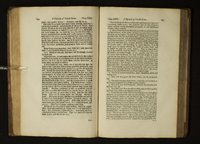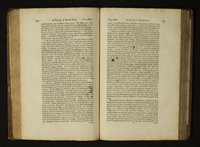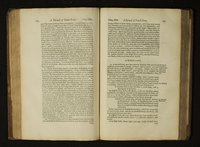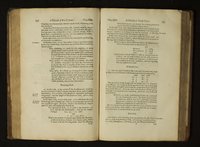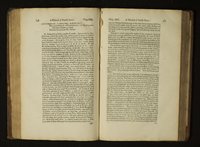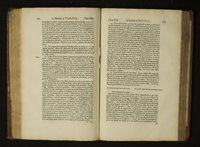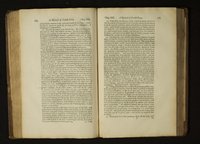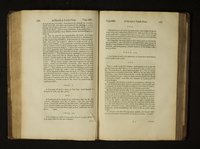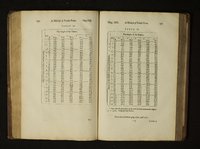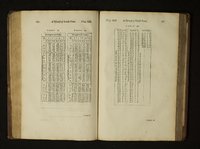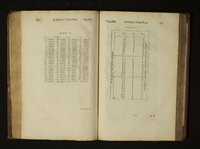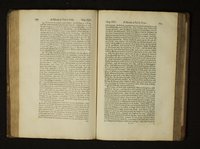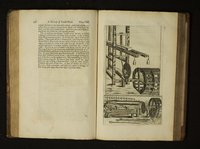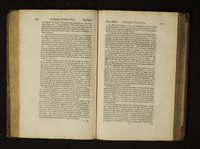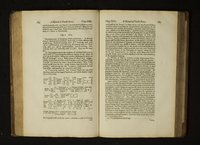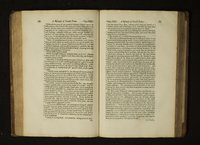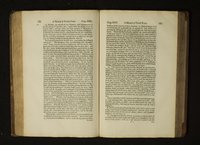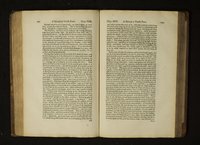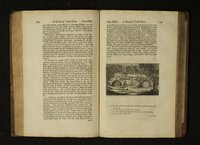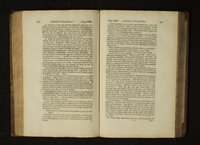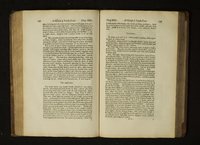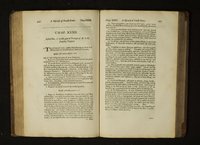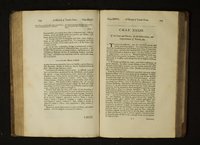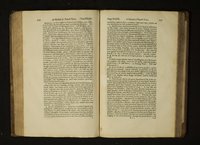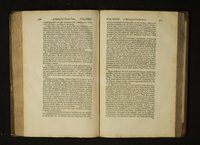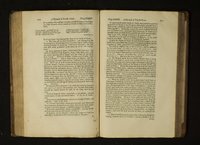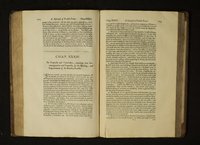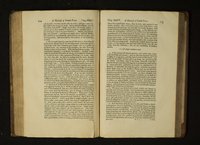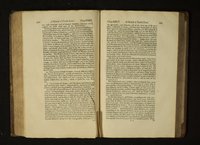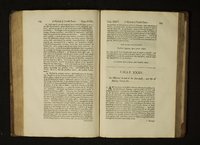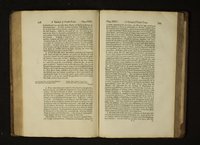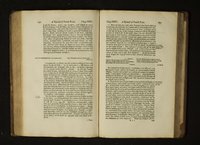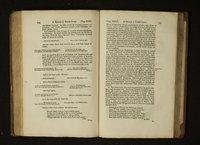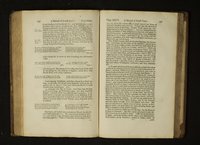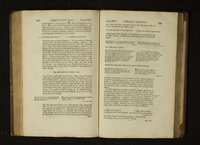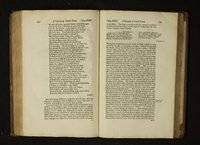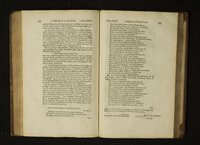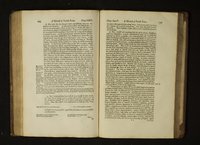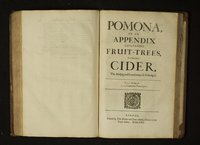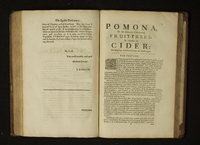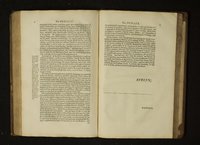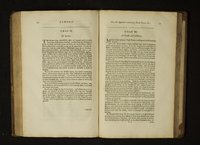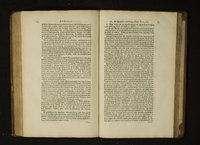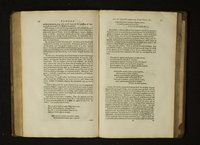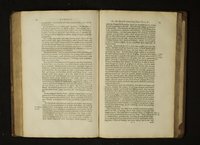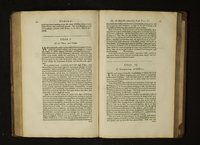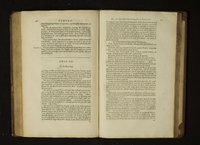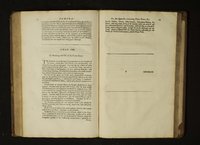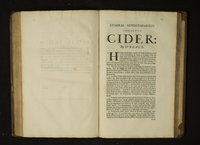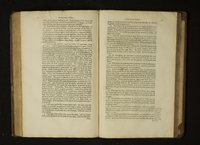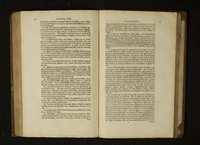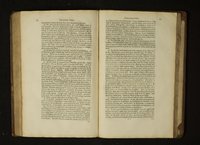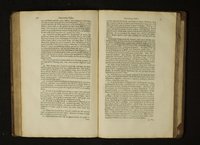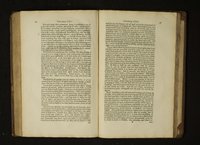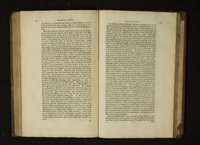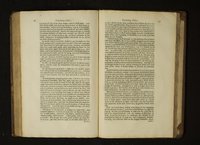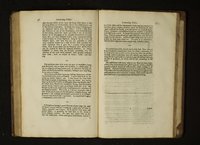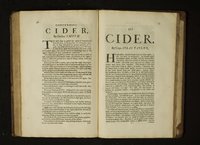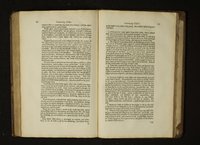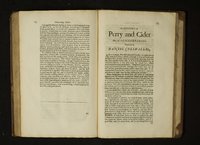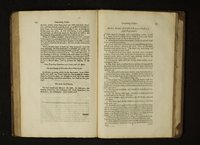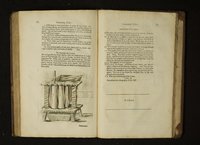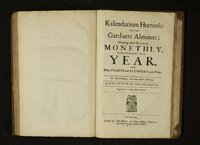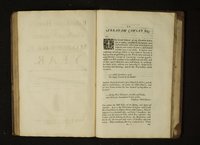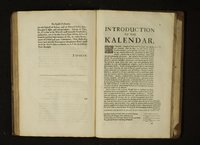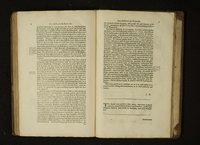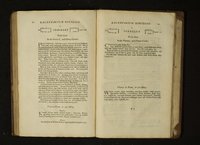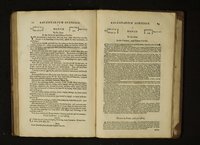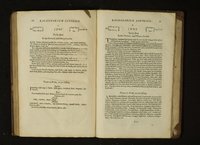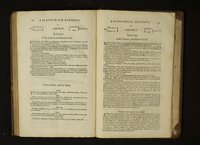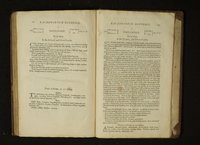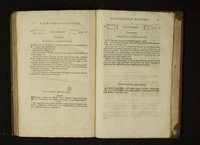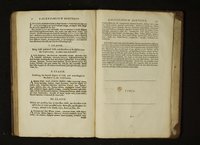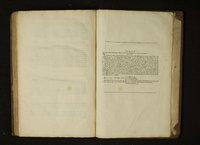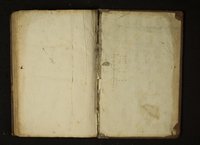| OCR Text |
Show 148 ‘A Difcourfe of Forelt-Trees, Chap.XXXé butefpecially, and more inevitably , when violently invaded by mortal and incurable Infirmities, or by what other extinction of their native heat , fubftrattion , or obfiruttion of Air and Moifture, which makingall motions whatfoeverto ceafe and determine , is the caufe of theirfinal deftruction. 2. Our honeft Countrey-man,to whofe Experience we have been obliged for fomething I havelately Animadverted concerning the Pruning of Trees,doesin another Chapter of the fameTreatife,{peak, of the Age of Trees, The Difcourfé is both learned, rational, and full of encouragement: For he does not fcruple to affirm, That even fome Frwit-Trees may poflibly arrive to a thonfand years of Age; and if fo Frait-Trees, whofe continual bearing does fo much impair and fhorten theirlives,as we fee it doestheir form and beau- ty; How muchlonger might we reafonably imagine fome hardy and flow-growing Foreé?-trees may probably laft, I remember Pliny tellsus of fome Oaks growing in histime in the Hercyian Foret, which were thought co-evows with the World it felf5 their roots had even raifed Mountains , and where they encounter’d, {welld into goodly Arches like the Gatesof a City: But our more modern Author's calculation for Fruit-trees (1 fuppofe he means Pears, Apples, &c. his allowance is three hundred years for growth,as much for their fland (as he terms it,) and three hundred for their Decay, which does in the total amount to no lefle than ize hundred years. This conje@ture is deduc’d from Apple-Trees growing in his Orchard , which having known for fourty years, and upon diligent enquiryof fundry aged Perfons of eighty years and more,who remembred them Trees all their time , he finds by comparing their growthwith others of that 4nd,to befar fhort in bignefs and per- fection, (viz, by morethen two parts of three) yea albeit thofe other Trees have been much hinderedintheir ftature , throughill government and mif-ordering. 3. Toeftablith this, he aflembles many Arguments from the age of Animals , whofe ftate and decay double thetime of their zzcreafé bythe fame proportion: If then (faithhe) thofe fraile Creatures, whofe bodies are nothing (in amanner) but atender rotienneffe , may live tothat age; Ifee not but a Tree ofa folid fubftance , not damnified by heat or cold, capable of, and fubjedt to any kind ofordering or dreffing,feeding naturally, and from the beginning disburthen'd ofal Superfiuities, eafed of, and ofhis own accord avoiding the caufes that may annoy him,fhould doublethe life ofother Creatures by very many pears. He proceeds,What elfe are Trees ix comparifon with the Earth, but as hairs tothe body of Man ¢ Andit i certain, that (without fome diftemper , or forcible caufé) the hairs dure with the body and are efteem'd excrements but fromtheirfuperfluows growth: So ashe refolves upon good Reafon , that Fruit-trees well ordered, maylive a thoufandyears,and bear Fruit ; and the longer the wore, the greater, and the better (for which an Inftance alfo in Dr. Beale’s Hereford- Jbire Orchards, pag. 21, 22.) becaufe his vigour is proud and {tron- ger, whenhis years are many. Thus fhall you fee old Trees put forth their Chap. XXX. A Difcourfe of Fovett-Trees; their Buds and Blofoms both fooner, and more i young Trees by much; And Ifenfibly percei ve ‘aie ~ Trees to enlarge their Fruit as they grow greate r, dc, And iéZ,ae Trees continue to this 4ge, how many 4ges is it to be fuppofed ftrong and huge Timber-Trees will laft> whofe maflie bodies require the years of divers Afethufela’s before they determine their days; whofe Sap is {trong and bitters whofe Bark is hard and thick, and their fubftance folid and {tiffs all which are dotties ofhealth and long life. Their ftrength withft Winds; their Sap ofthat quality is not fubjec ands all Bitecable t to Worms and tai . ing 5 their Bark receives {eldom or never by ey any itll and not only fo,but heis free from Removals,¢afual which are the death of millions of Trees; whereas the Fruit-tree (in rifon) is little, and frequently blown down; his Sap {weet compa eafily and foo tainted 5 his Barktender, and foon wounded and himfelf al by Aan, as Man ufes himfelf;, that is, either unshil full or careleff; Thus he. But Voffivs de Theolog. Gent. L. 5, c, 5. gives too Hele age to Afhegs when he fpeaks but of one hundr ed years 3 and is theMedica, Pyrus,Prunus,cornus but fixty:he had as good have held his peace : Even Kofémary has lafted amongft us a hundr e dyear 4. Imigh t to this add much more , and truly with fufficient pr bability, that the Age of Timber-trees, efpecially of fuch as be Ofa compatt, refinous , or balfamical nature (for ofthis kind are the Eugh, Box , Horn. beam, White-thorn , Oak, Walnut, Cedar Juni ; &c.) are capable of very long duration and conti nuance! Thole of largeft Roots (a fign of Age) longer liv'd than the fhorter ; the dry than the wet; and the gummy, than the watery, fterile. than a fruitful: For not to conclude from Pliny’s Hercynian Oaks or ie Terpentine Tree of Idumea, (which Jofephus ranks alfo with ie Creation: ) [mention’d a Cyprefyet remaining fomew here in Perf neer an old Sepulchre, whofefem is as large asfive men can enco ‘s pafs, the boughs extendingfifteen paces every way3 this mutt needs bea very old Tree, believ'd by my Autho r little lefle the 2500. years of age: The particulars were too long torecount The old Platanus fet by Agamemnon, mention’d by Theophraftus sind th Herculean Oaks; the Laurel neer Hippocren , the Vatica n Hex shy Vine which was grown to that bulk ad Woodineffé as Jumns in Juno's Temple: Pliny mentions one of fixh to make Coundred ears old in his time; and at Egvan thelate Duke of Montm oramtys houfe isa Table of avery large dimention made of the fame aa And the old Lotus Trees, recorded by Valerius Maximus, and the. “ercus Mariana celebrated by that Prince of Orators : Pliniesba e Larix, and what grew in the Fortusate [lands , with mous Tree Scaliger reports was growing in the Troglod that san yfic India,8cc were famous for their age: Saint Hierome affirms he {aw the Sycomor that Zaccheus climb'd up, to behold our LORD Lae in Triumph to Jerufalem: And now in the Aventine Mount thewusthe Adalus, Medica, planted bythe hand ofSaint Dowinthey ic« In Congo they{peak of Trees capable ta be excavated in Veffels that X would |

